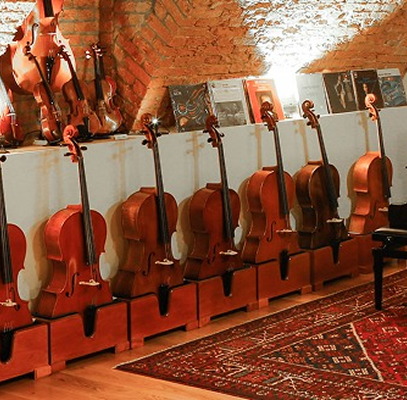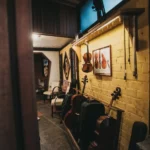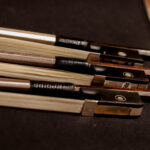Understanding Open Seams in Musical Instruments
Back to BlogUnderstanding Open Seams in Musical Instruments
Have your musical instruments like violin, viola, or cello, stop producing the same quality of sound that they used to make? The biggest reason behind this issue comes in the form of open seams which not only affects the sound of your instrument but also its structural integrity. Having an understanding of what is an open seam for instruments and how you can address these issues is essential for both musicians and collectors alike.
Open Seams in Musical Instruments
What is an Open Seam?
An open seam appears when the glue that is holding the two wooden pieces of your instrument together becomes weak — leading them to separate. Usually, this separation appears along the edge of the instrument’s body, particularly at the joints between the top plate, back plate, and ribs. While it might seem like a minor issue — instruments that have open seams can impact the sound, playability as well as durability.
Why Do Open Seams Occur?
The biggest reason for your seams to develop is your wood’s natural behaviour. What that involves is that it expands and shrinks with temperature and humidity in its environment. As wood is hygroscopic, it absorbs and releases moisture in its environment — and can expand and contract your wood. That can cause a significant strain on your glue — and then your wood separates.
Signs of an Open Seam
Detecting an early opening seam is critical in maintaining an instrument healthy. Some of its most prevalent symptoms include:
- A buzzing, rattling, etc., when sounded
- A visible wood part gap
- A change in the sound or pitch of the instrument
- An unusual change in the structure of an instrument
Musicians and collectors can inspect for open seams by lightly pressing down over the edge of the instrument. Wherever wood shifts when pressed, and/or a faint clicking sound can be heard, an open seam probably exists.
How to Prevent Open Seams
While open seams can occur, with proper care, they can actually be avoided. To minimize the chance, use these tips:
Maintain Stable Humid Environment:
Keeping a constant humidity (ideally 50-60%) environment for the instrument keeps wood in a state neither of expansion nor excessive contraction.
Use a Dehumidifier or a Humidifier:
In a dry environment, a case humidifier will preserve moisture, and a dehumidifier will prevent excessive bulging in a wet environment.
Store the Instrument in a proper manner:
Don’t leave the instrument in direct sunlight, radiators, or air conditioning ducts, for wood and glue will become stressed through extreme temperature fluctuations.
Regular Inspections:
Sustained examination of the tool for signs of open seams will reveal minor separations early, allowing them to become an issue not yet
Repairing an Open Seam
If an opening in a seam occurs, a restoration will have to be performed to re-establish its integrity. Restoration work most frequently involves:
- Cleaning the Seam: All trash and debris in the opening is removed in preparation for a strong adhesion.
- Reapplying Hide Glue: Reapply new hide glue to the uncovered seam for a strong and reversible join.
- Clamping the Seam: In drying, the seam is clamped together in a way that forms a secure seal.
- Final Adjustments: Once dried, the glue and the instrument are checked for stability and playability.
The Impact of Open Seams On Sound
An open seam will affect an instrument’s sound and its overall sound quality. Because plates of an instrument resonate in producing sound, an opening in a seam can disrupt such a function. That can produce a thin, weakened sound, even buzzing sounds in an unpleasant manner. Closing an open seam will re-enable an instrument’s full sound and preserve a sound consistently produced.
Open Seam for Instruments
To do a small summary of what is an open seam for instruments. Open seams in violin, viola, cello, and bass are a common issue, and expansion and contraction of wood can naturally occur in them. Maintaining proper humidity, storing them with care, and checking them regularly can prevent such an issue. Plus, also make sure that you purchase your instruments from reliable instrument providers like Amorim Fine Violins.









